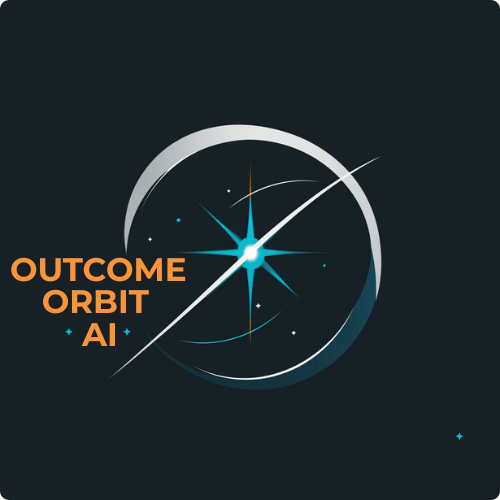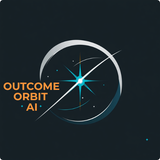The Real Talk About AI in Small Business: 3 Game-Changing Opportunities (That Actually Work)

Here's what nobody tells you about AI consulting: I learn as much from my clients as they learn from me.
Over the past few weeks, I've sat down with manufacturers struggling with inventory management, medical practice owners drowning in administrative tasks, and consulting firm partners who can't scale their client intake process. Each conversation teaches me something new about their industry—and reminds me why I'm passionate about making AI accessible to businesses that don't have Fortune 500 budgets.
The truth? AI isn't a magic wand that fixes everything. But here's the good news: there's always at least one area where the smart application of AI can deliver measurable results that directly impact your bottom line.
Last week, I shared how AI can reshape your customer journey (if you wrote about this previously, add the actual link). Today, I want to get practical and show you three specific ways AI can transform your day-to-day operations—without the tech jargon or empty promises.
These aren't just the most impactful opportunities I see; they're also the easiest to implement and the fastest to show ROI.
1. Never Miss a Customer Again (24/7 Engagement That Actually Converts)
Your customers don't work 9-to-5 schedules, so why should your customer service?
The challenge: Small businesses can't afford round-the-clock staff, but they can't afford to lose customers to competitors who respond faster either.
The AI advantage: Intelligent voice agents and automated systems that provide instant, personalized responses—even at 2 AM on a Sunday.
What this looks like: Medical practices using AI voice agents to handle appointment bookings, send reminder texts, and answer common questions about insurance coverage. Service businesses deploying AI phone systems that capture after-hours inquiries and schedule estimates automatically. This approach typically reduces no-show rates by 30-40% and increases customer satisfaction because people get immediate answers instead of waiting until business hours.
The business impact: Every missed call is potentially thousands of dollars in lost revenue. An AI voice agent working 24/7 can capture leads, book appointments, and provide basic customer service when your team isn't available.
Quick win for you: Implement an AI voice agent that answers your phone 24/7, handles common inquiries, and books appointments directly into your calendar. These solutions typically cost $100-200/month but can capture after-hours leads and appointment bookings that would otherwise be lost to competitors.
2. Eliminate the Time Thieves (Automate What's Killing Your Productivity)
You know that feeling when you spend three hours on data entry instead of closing deals? Those repetitive admin tasks aren't just boring—they're stealing your most valuable resource: time.
The reality: Most small businesses lose 20-30% of their productive hours to manual work that could be automated.
The AI solution: Smart automation tools that handle the grunt work while you focus on growing your business.
What this looks like: AI agents that process incoming orders, update inventory levels, and send confirmation emails automatically. Systems that handle invoice generation, payment reminders, and basic customer follow-ups without human intervention. Teams typically save 10-15 hours per week and dramatically reduce processing errors.
The business impact: Those 15 hours per week add up to nearly two full workdays that you can redirect toward revenue-generating activities. Plus, automated systems don't make the human errors that cost time and money to fix.
Quick win for you: Start with AI tools that can handle appointment scheduling, basic email responses, or invoice generation. These typically pay for themselves within the first month by freeing up time for higher-value activities.
3. Connect the Dots (Make Your Systems Talk to Each Other)
If you're manually entering the same information into three different systems, you're doing it wrong.
The problem: Most small businesses use 5-10 different software tools that don't communicate with each other, creating data silos and endless double-entry work.
The AI solution: Intelligent workflows that automatically sync information between your CRM, accounting software, scheduling system, and other tools.
What this looks like: AI workflows that automatically create QuickBooks invoices when project milestones are completed in project management software, send payment reminders to clients, and update CRM systems with payment status. Customer information flowing seamlessly from your website forms to your CRM to your email marketing platform. Businesses typically reduce billing time by 70% and improve cash flow because invoices go out immediately.
The business impact: Beyond time savings, connected systems give you a single source of truth for your business data. This means better decision-making, fewer errors, and the ability to spot trends and opportunities you might otherwise miss.
Quick win for you: Start by connecting just two systems that you use daily. For example, automatically create CRM contacts from new form submissions, or sync calendar appointments with your billing system. Most integration platforms offer simple drag-and-drop setup that requires no coding knowledge.
Why These Three Come First
I focused on these specific areas because they share three critical characteristics:
1. Immediate ROI: You'll see benefits within weeks, not months.
2. Low risk: These solutions integrate with your existing processes without requiring major changes.
3. High impact: Each one addresses a fundamental business challenge that affects your bottom line daily.
The Bottom Line (What This Really Means for Your Business)
AI isn't about replacing your team—it's about giving your small business the same operational advantages that enterprise companies have, without the enterprise budget.
The businesses that embrace AI tools today will have a significant competitive advantage tomorrow. Not because they're more "tech-savvy," but because they're more efficient, responsive, and data-driven.
Start with one. Master it. Then expand.
You don't need to implement all three at once. Pick the one that addresses your biggest pain point right now. Get comfortable with it. See the results. Then move to the next.
Ready to stop flying blind and start flying smart?
If any of these examples made you think "I wish I had that for my business," let's talk. I offer free 15-minute AI opportunity assessments where we'll identify the biggest impact area for your specific situation.
Schedule your free AI consultation here – no sales pitch, just honest advice about where AI can make the biggest difference in your business.
Which of these three resonates most with your current challenges? Drop a comment below and let's brainstorm how to tackle it first.





